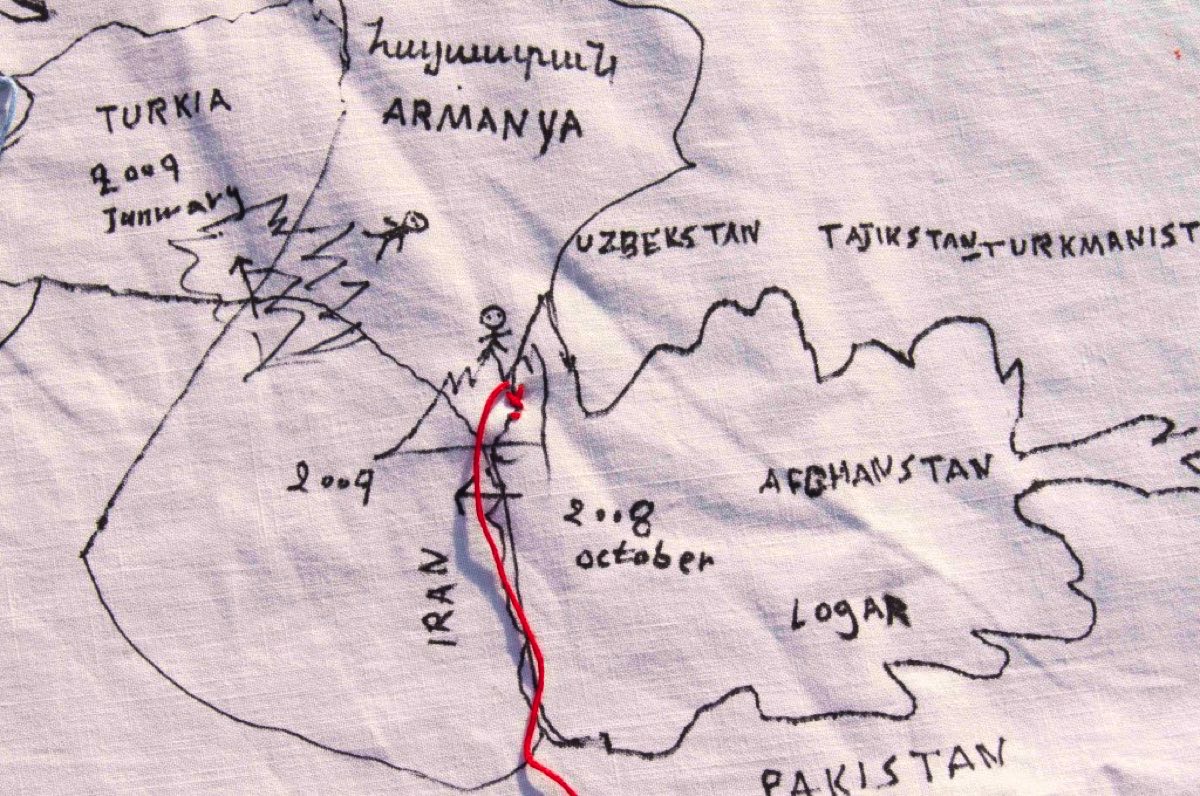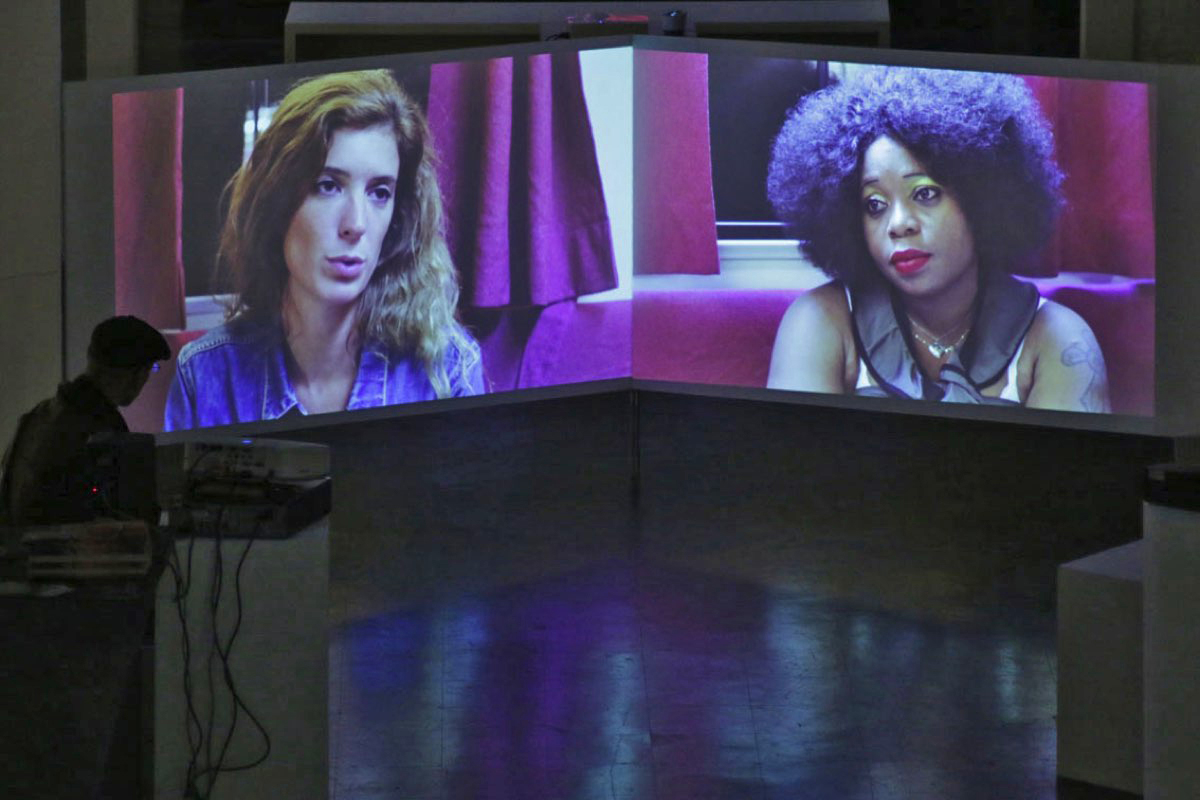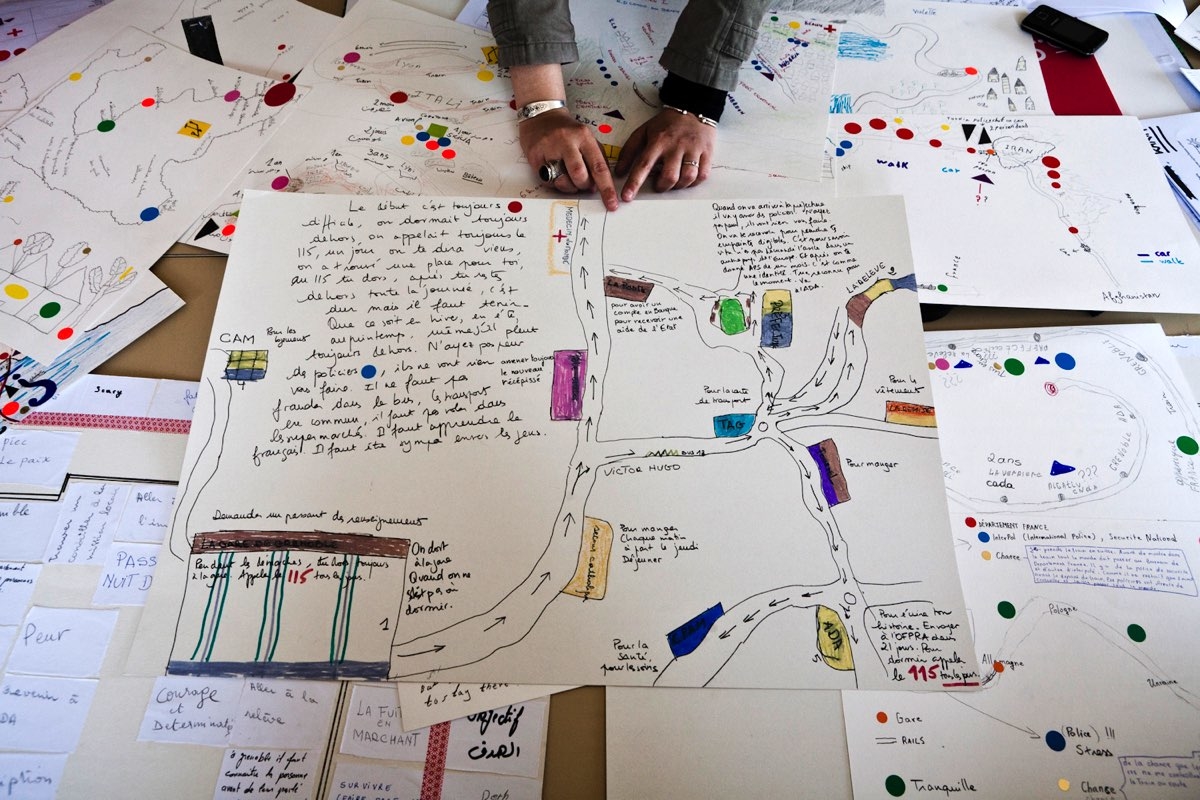This alternative mapping is at the intersection of humanities and art. It is the outcome of an experimental and participatory mapping workshop that involved travelers, artists and researchers. Mapping is treated as a creative technique to reveal experiences. The maps produced with travelers evoke memories of journeys and migratory adventure.
Started in 2013 in Grenoble France, it developed as a collaborative work by two researchers in geography, three artists, and twelve inhabitants of Grenoble (men and women) who are or have been asylum seekers. In a context where government agencies require ‘verifiable’ stories before deciding whether or not to grant asylum, our research/creation project Cartographies traverses/Crossing Maps did not focus on truth or referentiality.

Our objective was to challenge the notion of “truth”, as described above, by co-producing maps of migratory experiences: not as stories or testimonies that are true or false, nor as referential material but as referential and non-referential discourses. We invited asylum seekers to work with forms of expression that do not echo the interactions prevailing in governmental agencies. In our discussions, we did not ask questions. Rather than ask participants to “tell their story”, we invited them to draw freehand maps on paper or cloth, without references to maps (avoiding truth or untruth), and without judgment (“well done = badly done = not done”, Filliou, 1968). This work raised issues about how to develop a co-production with people having very different and unequal status (artist, researcher, asylum seeker): we were trying here to revisit these asymmetries and complementarities.
For more elements on this project, see the article of Sarah Mekdjian and Marie Moreau “Re-drawing the experience: Art, science and migratory conditions”, antiAtlas Journal, 01 | 2016, [Online]


